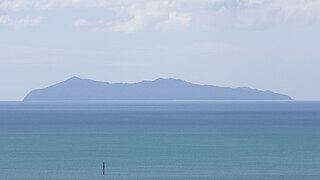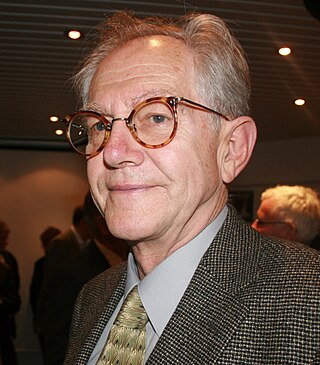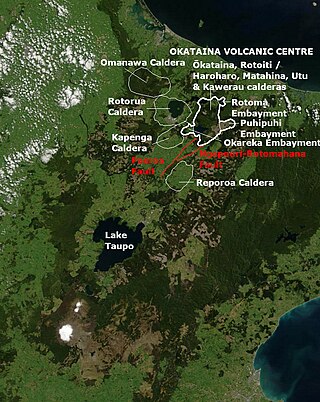Related Research Articles

A volcano is a rupture in the crust of a planetary-mass object, such as Earth, that allows hot lava, volcanic ash, and gases to escape from a magma chamber below the surface. The process that forms volcanoes is called volcanism.

A pyroclastic flow is a fast-moving current of hot gas and volcanic matter that flows along the ground away from a volcano at average speeds of 100 km/h but is capable of reaching speeds up to 700 km/h. The gases and tephra can reach temperatures of about 1,000 °C (1,800 °F).

Volcanology is the study of volcanoes, lava, magma and related geological, geophysical and geochemical phenomena (volcanism). The term volcanology is derived from the Latin word vulcan. Vulcan was the ancient Roman god of fire.

A volcanologist, or volcano scientist, is a geologist who focuses on understanding the formation and eruptive activity of volcanoes. Volcanologists frequently visit volcanoes, sometimes active ones, to observe and monitor volcanic eruptions, collect eruptive products including tephra, rock and lava samples. One major focus of inquiry in recent times is the prediction of eruptions to alleviate the impact on surrounding populations and monitor natural hazards associated with volcanic activity. Geologists who research volcanic materials that make up the solid Earth are referred to as igneous petrologists.

The Taupō Volcanic Zone (TVZ) is a volcanic area in the North Island of New Zealand. It has been active for at least the past two million years and is still highly active.
A mantle is a layer inside a planetary body bounded below by a core and above by a crust. Mantles are made of rock or ices, and are generally the largest and most massive layer of the planetary body. Mantles are characteristic of planetary bodies that have undergone differentiation by density. All terrestrial planets, all ice giants a number of asteroids, and some planetary moons have mantles.

Masaya is a caldera located in Masaya, Nicaragua, 20 km (12 mi) south of the capital Managua. It is Nicaragua's first and largest national park, and one of 78 protected areas of Nicaragua. The complex volcano is composed of a nested set of calderas and craters, the largest of which is Las Sierras shield volcano and caldera. Within this caldera lies a sub-vent, which is Masaya Volcano sensu stricto. The vent is a shield type composed of basaltic lavas and tephras and includes a summit crater. This hosts Masaya caldera, formed 2,500 years ago by an 8 km3 (1.9 cu mi) basaltic ignimbrite eruption. Inside this caldera a new basaltic complex has grown from eruptions mainly on a semi-circular set of vents that include the Masaya and Nindiri cones. The latter host the pit craters of Masaya, Santiago, Nindiri and San Pedro. Observations in the walls of the pit craters indicate that there have been several episodes of cone and pit crater formation.

Mayor Island / Tūhua is a dormant shield volcano located off the Bay of Plenty coast of New Zealand's North Island. It lies 35 kilometres (22 mi) north of Tauranga and covers 13 km2 (5 sq mi).

Haraldur Sigurðsson or Haraldur Sigurdsson is an Icelandic volcanologist and geochemist.
George Patrick Leonard Walker was a British geologist who began his career studying mineralogy and later made significant contributions to volcanology. He was widely regarded as one of the pioneers of modern quantitative volcanology.

A volcanogenic lake is a lake formed as a result of volcanic activity. They are generally a body of water inside an inactive volcanic crater but can also be large volumes of molten lava within an active volcanic crater and waterbodies constrained by lava flows, pyroclastic flows or lahars in valley systems. The term volcanic lake is also used to describe volcanogenic lakes, although it is more commonly assigned to those inside volcanic craters.

A Vulcanian eruption is a type of volcanic eruption characterized by a dense cloud of ash-laden gas exploding from the crater and rising high above the peak. They usually commence with phreatomagmatic eruptions which can be extremely noisy due to the rising magma heating water in the ground. This is usually followed by the explosive clearing of the vent and the eruption column is dirty grey to black as old weathered rocks are blasted out of the vent. As the vent clears, further ash clouds become grey-white and creamy in colour, with convolutions of the ash similar to those of Plinian eruptions.

The International Association of Volcanology and Chemistry of the Earth's Interior (IAVCEI) is a learned society that focuses on research in volcanology, efforts to mitigate volcanic disasters, and research into closely related disciplines, such as igneous geochemistry and petrology, geochronology, volcanogenic mineral deposits, and the physics of the generation and ascent of magmas in the upper mantle and crust. It is one of eight constituent associations of the International Union of Geodesy and Geophysics (IUGG).

Rosaly M. C. Lopes is a planetary geologist, volcanologist, an author of numerous scientific papers and several books, as well as a proponent of education. Her major research interests are in planetary and terrestrial surface processes with an emphasis on volcanology.

Stephen L. Harris was Professor of Humanities and Religious Studies at California State University, Sacramento. He served there ten years as department chair and was named a Woodrow Wilson Fellow. He received his MA and PhD degrees from Cornell University. Harris was a member of the American Academy of Religion, a fellow at the Westar Institute, a fellow of the Jesus Seminar, and authored several books on religion, some of which are used in introductory university courses.

The Reporoa Caldera is a 10 km by 15 km caldera in New Zealand's Taupō Volcanic Zone located in the Taupō-Reporoa Basin. It formed some 280,000 years ago, in a large eruption that deposited approximately 100 km3 of tephra, forming the Kaingaroa Ignimbrite layer. The ignimbrite sheet extends up to 15 km (9.3 mi) to the east.

Lake Taupō, in the centre of New Zealand's North Island, fills the caldera of the Taupō Volcano, a large rhyolitic supervolcano. This huge volcano has produced two of the world's most powerful eruptions in geologically recent times.

Colin James Ness Wilson FRS FRSNZ is Professor of Volcanology at Victoria University of Wellington in New Zealand.

Hazel Rymer is a British volcanologist and pro-vice chancellor at the Open University. Her research investigates how active volcanoes affect their environment and impact global climate change. She leads the citizen science project Earth Watch.
Marta Lucía Calvache Velasco is a Colombian geologist and volcanologist, best known for her work on geological hazards and risk reduction in Colombia.
References
- ↑ Houghton, Bruce (1977). Geology of the Takitimu group and associated intrusive rocks, central Takitimu Mountains, western Southland, New Zealand (Doctoral thesis). OUR Archive, University of Otago. hdl:10523/3991.
- ↑ University of Hawai'i: Department of Geology and Geophysics profile Archived 9 June 2010 at the Wayback Machine
- ↑ Houghton, Bruce. "Bruce Houghton appointed to the Gordon A Macdonald chair in volcanology". Institute of Geological & Nuclear Sciences Limited (GNS), New Zealand. Archived from the original on 22 May 2010. Retrieved 19 May 2010.
- ↑ Morton, Jamie (31 August 2017). "Kiwi 'giant of volcanology' Bruce Houghton wins world honour". New Zealand Herald. Retrieved 5 May 2018.